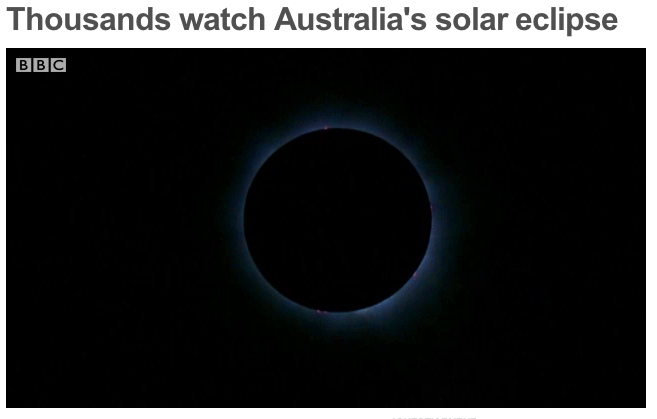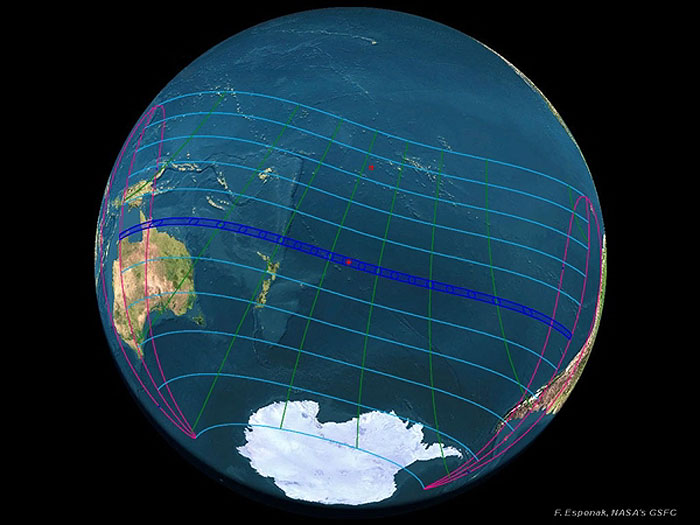This map shows the thin track of totality for the Nov. 13-14 total solar eclipse, as well as a grid showing the wide area of the Asia-Pacific region and Antarctica from which a partial eclipse will be visible.
More than 50,000 tourists are expected to converge on Australia for the year's only total solar eclipse on Nov. 13-14 — and I'm one of them. If you're not, don't despair: There'll be ample webcasts of the event, thanks to the magic of the Internet.
Most of the throngs will gather in Australia's northern province of Queensland, "Gateway to the Great Barrier Reef," which is already getting set for the additional crush of visitors.
"The challenge and the opportunity is that it takes place over such a short space of time ... but we're not focused on just the black spot in the sky; it's how we use the opportunity to promote the destination," Tourism Queensland's Jeff Gillies told The Cairns Post. The economic impact could amount to $75 million or more. And that's in Australian dollars.
The psychological impact can be just as stunning, even though totality lasts only a few minutes at most: When the moon fully covers the sun's disk, the skies darken and the delicate glow of the sun's corona becomes visible around that black spot.
Linda Bugbee, a tourist from Virginia who is heading to Australia to see her fourth solar eclipse, told The Associated Press that her first brush with totality "was a lot more emotional than I expected."
"Time sort of stops, but you know it's only going to last a minute or so," she said. "You sort of take the universe and the planets for granted, but when this happens, it seems so real."
It all seems so unreal for me: While Linda Bugbee and her husband will be watching the eclipse from the city of Cairns on Nov. 14, I expect to be looking up from the deck of a cruise ship off Australia's east coast. The Dawn Princess is due to find a clear patch of sky somewhere within the track of totality, which measures roughly 100 miles wide from north to south, and thousands of miles long from east to west.
The eclipse begins at sunrise in Australia's Garig Ganak Barlu National Park, and ends at sunset about 500 miles west of Chile. A partial solar eclipse will be visible across a wider stretch of the Pacific, Australia, New Zealand, Antarctica and South America.
Post-dawn darkness is due to fall on Cairns at 6:39 a.m. AEST on Nov. 14, which translates to 3:39 p.m. ET Nov. 13. You should be able to follow the eclipse online via these webcams:
University of North Dakota's SEMS team on Ustream.
Panasonic Eclipse Live plans solar-powered webcast.
Gorge Creek Orchards in Mareeba in northern Australia.
Total Solar Eclipse from Brisbane on the Australian coast.
Total Solar Eclipse from Oak Beach near Cairns.
-
Quelle: NBC
-
Update: 13.11.2012 / 19.45
Tens of thousands of scientists, astronomers, eclipse chasers, their friends and families are reported to be descending on Australia to see the total solar eclipse.
If you are not one of them, you can watch the eclipse as it happens live over the Internet. Nasa, the Astronomical Association of Queensland, and Tourism Queensland have teamed up to provide live webstreams. You will find them at the bottom of this post.
In Australia, the eclipse takes place early on the morning of Wednesday 14 November. In the UK, however, thanks to the 10-hour time difference between the two countries, the moon begins to cover the sun at 19:45 on the evening of Tuesday 13 November. The total phase of the eclipse, when the sun's disc is completely blocked out, commences at 20:38.
For the east coast of America, the eclipse will provide an afternoon Internet spectacle and for the west coast, it's the perfect distraction for an early lunch break. But don't be late. The eclipse is a quick one this time, with totality lasting just two minutes.
Before the 1970s, total eclipses were the only opportunity for astronomers to see the ghostly outer atmosphere of the sun, known as the solar corona. This ephemeral sight is one of nature's most haunting visions and some astronomers even lamented the fact that they had to perform measurements and take photographs when all they really wanted to do was drink in the view.
The corona itself is a tenuous atmosphere of gas, heated by largely unknown mechanisms to more than a million degrees centigrade. The atoms in the corona continuously leak into space, creating the solar wind. The corona is constantly replenished by atoms escaping the surface of the sun.
Solar flares can rip a billion tonnes of gas from the corona and fling it into space. When these coronal mass ejections (or CMEs as astronomers refer to them) hit the Earth they create sparkling aurorae in the atmosphere and can disrupt electrical technology.
To warn against such events, spacecraft now routinely carry instruments called coronagraphs that create an artificial eclipse, allowing them to monitor the sun's atmosphere. This is the web feed from the Esa/Nasa spacecraft Soho.
That frees the rest of us up to simply watch the solar eclipses and marvel at them.
Quelle:theguardian
LIVE-Update von SoFi in Australien:
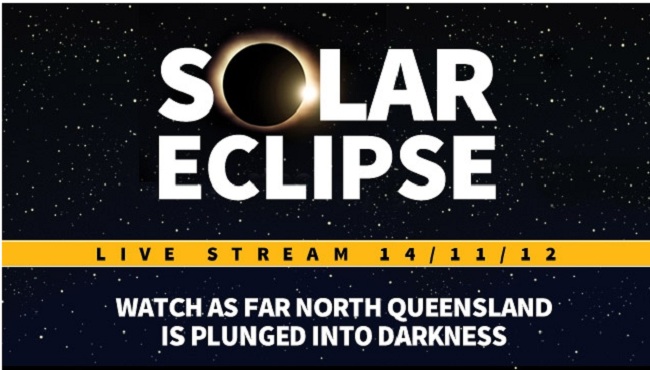
-
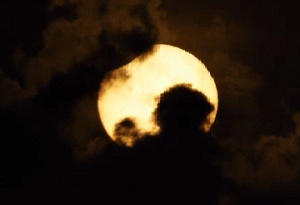
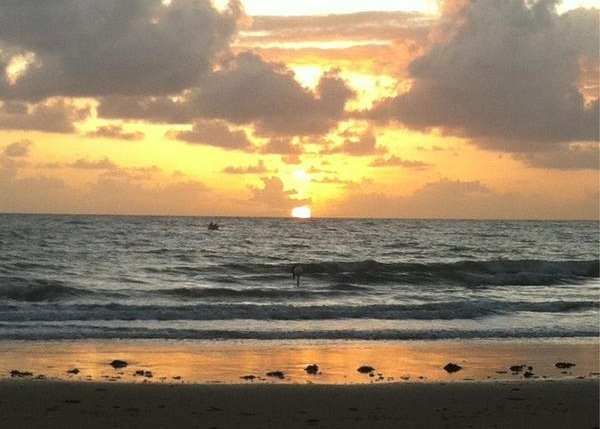
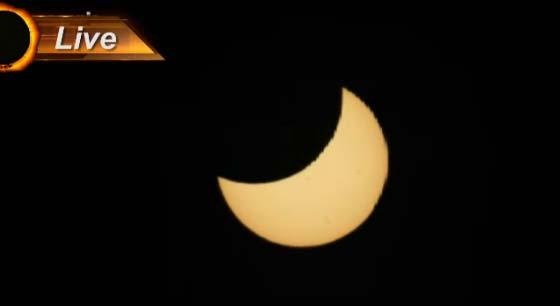
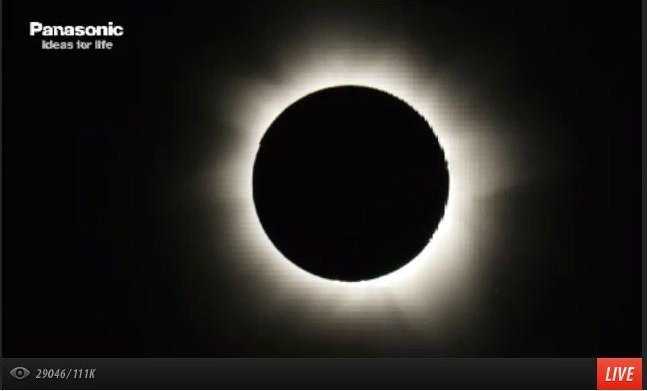
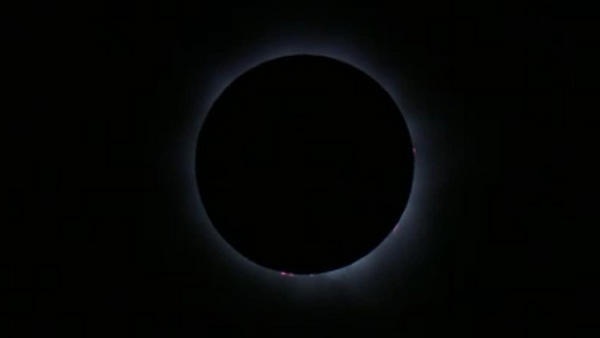
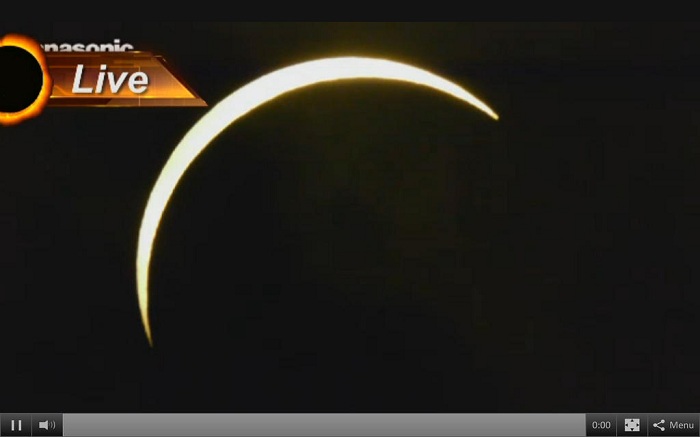
-
Update: 14.11.2012
Irre schöne Video-Aufnahme von SoFi über Australien hier: http://www.bbc.co.uk/news/science-environment-20320663
